“Slow down, don’t get in a rush, can’t you see we’re in a hurry?” The cliche old adage might evoke an eye roll from some or a chuckle from others. Depending on the orator, timing, and delivery, this saying might make you chuckle or want to pull your hair out. However, underneath that is an immutable truth that, bore in mind, might help people form more cohesive partnerships with their horses.
Now might be a seemingly perfect time to delve into some pseudo-intellectual wisdoms about the high-speed cell phone age and instant gratification (many of which I might agree with but seem basically obvious) but instead, a few observations and short stories might more succinctly suffice to glean some crucial observations from.
We all get to decide what our horse experience is. Some put the benefit of the horse behind accomplishment, wealth, and accolades. Others coddle them in a manner equally as unclear-eyed and self-serving. This isn’t the time to postulate a philosophical treatise about how to view the horse, but I will say, for me, the most valuable, deeply meaningful times I can look back on with horses are all times I was uniquely engaged, present, and mindful. Working a colt with Dad in the round pen, the silence between us except for the sound of dirt compacting under the horse’s hooves, the feel of the faintest breeze on my sweat-soaked shirt, steadily watching, tenderly, for the slightest change, the slightest try. We took our time, and from everything I saw, and from what I continue to see in my personal business with horses, it was to their benefit. These experiences with this way of working horses seemed Aristotelian, mutually enjoyable while efficient, and the virtue between the vicissitudes of how to exist and partner with horses. We never rushed these horses because there was never a desired outcome. Each day we set out to further build the horse’s education. However long it took the horse to reach another conclusion was simply the amount of time it would require.
There is though, the argument for efficiency. It’s one easy to sympathize with. If I am anything at heart, it is a pragmatist. So, before I got around Blacks, I went to work for a guy who had been a colt starter for many years. He was an immensely more accomplished horseman and could ride a large volume of horses per month. Too much speed didn’t make sense to me, then or now. A horse has a very sensitive nervous system, and it’s crucial to set up a situation where they can succeed. Some guys can do that quickly, it’s a skill no doubt, but speed always seemed diametrically opposed to thoroughness, and there were few jobs I assigned more value to than that of starting a colt. There was a level of self-preservation and release you could finely ride the line of, with adequate breaks, and only just the right amount of repetition. As far as I could tell it was a seemingly infinite pool. The further you journeyed, the more depth appeared. I had been toying with that and was getting great qualitative long-term results. This method seemed to not factor that in. Suffice it to say, I was relatively skeptical.
However, I did my best to get on board. It’s no secret what makes sense to me hasn’t exactly always lined up with what’s mainstream, so I tried to keep an open mind. What I observed out of the public spotlight was a masterclass in how to start a horse as fast as possible. This was done in the name of an old friend, efficiency, but efficiency is not what was on display. Most of the horses wound up with gaping holes in their training and were often downright dangerous. To counter this internally within the hierarchy, cliques were formed for those ambitious enough to look aside, rewarded by being deemed top hands, while horses were usually swiftly charged and tried, receiving a negative label. Overall, the horse came last and the juxtaposition between what was happening and any qualitative or quantitive efficiency was stark. The expression “penny-wise and pound-foolish” should suffice.
Horses are primarily flight animals. The same level of patience and grace you’d like to be shown while learning algebra from someone who doesn’t speak the same language as you while you’re half-terrified they might try to eat you at a given moment’s notice is what you should show to the horse. I never was fortunate enough to know the Dorrances, so I won’t try to ride on their coattails, act like I’m keeping their memory alive, or suggest they would agree with anything I’ve said here. However, Randy Rieman DID know them well, Bill in particular. I was fortunate enough for him to help me braid a reata one summer, and he shared a story with me. I hope I’ve gotten the details right.
A young man was having trouble with his horse. Bill Dorrance observed this and offered up his help. The young man, stumped, seemingly, with his own perceived depth of the problem in mind, thoroughly vexed by the animal, replied something like, “Well just how long have you got?” Bill being the patient, pragmatic man that he was replied, “Well…from now on.”
That’s all the time we know we have for sure with horses. From now on, until we die. Learning takes time. Being present, taking my time, and being patient has led to the highest level of proficiency I’ve yet achieved with horses, and better yet, the best and most meaningful experiences to date. I think it will for you too. It takes a little effort, and you have to get it right, but when you do I promise you it’s what you’ve yearned for. So slow down, can’t you see we’re in a hurry?
